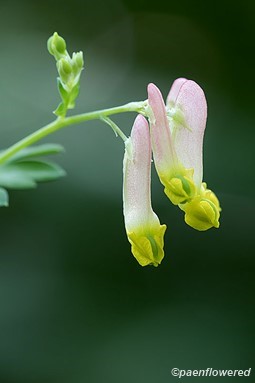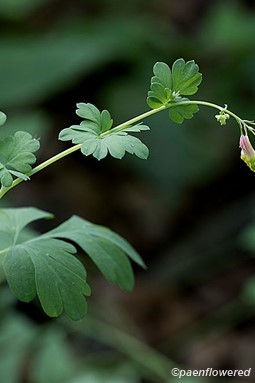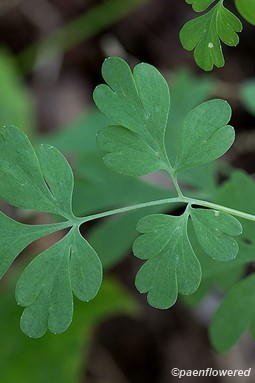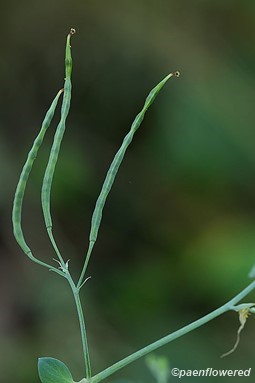Capnoides sempervirens
Capnoides sempervirens pink corydalis
Add to MyPlants View Locations
Pink corydalis, also known as rock harlequin or pale corydalis, is a biennial herbaceous plant that grows 1 to 2.5 feet tall. In its first year, it forms a basal rosette of soft, lacy foliage. In its second year, it sends up slender, branching stems adorned with delicate, tubular flowers, pink with yellow tips, that dangle along the stems and cluster at their tips. The plant blooms throughout the summer, from May to September, adding soft color to dry woods, rocky ledges, cliffs, and areas often disturbed by fire or human activity.
The leaves are fern-like, blue-green, and waxy, with deep lobes. They are compound, typically divided into groups of 3 to 5 finely cut leaflets. Bees and butterflies are drawn to the nectar of its distinctive pink and yellow flowers, while rabbits may occasionally browse its foliage.
This plant is typically found in the New England states, the Great Lakes region, and south along the Blue Ridge Mountains into northwestern Georgia. It is abundant throughout Canada and also occurs in parts of Alaska.
The Iroquois used a decoction of pink corydalis as a topical remedy for hemorrhoids.
Habitat & Range
Grows in dry, rocky woods, cliffs & ledges. Prefers partial shade to full sun, dry to medium-moisture and gravely soil.
Present throughout the state.
Range: Found in the New England states, the Great Lakes region, and south along the Blue Ridge Mountains into northwestern Georgia as well as in Canada and Alaska.
Wetland Code: Not classified
Phenology
Flowers May to September.
Characteristics
Inflorescence racemes or panicles terminating branches
Flowers irregular, tubular, pink with yellow tips; ½ to ¾ ″ long
Leaves compound, margins lobed and scalloped; blue-green, waxy
basal leaves 3 to 5 major lobes/leaflets, further dissected; petiolate
cauline leaves alternate; lower similar to basal; upper substantially reduced and sessile
Stem blue-green, smooth, hollow, branched above
Fruit narrow seed capsule with numerous tiny seeds; erect at maturity; up to abt 2″ long; seeds shiny black , aril 0.5mm long
Height 1 to 2.5 feet
Plant Codes
S-rank: G4 (Apparently Secure)
G-rank: G5 (Secure)
Ecology
Primary pollinators bumble bees and long-tongued bees while small solitary bees and skippers visit the flowers for nectar. Ants often disperse the black and shiny seeds, possibly allowing them to sow early and form a basal rosette in the later part of the summer before blooming the following year. Rabbits occasionally browse on the foliage.
Capnoides sempervirens pink corydalis
Synonyms: Corydalis sempervirensAdd to MyPlants View Locations







Comments
Have you spotted this plant in your area? We'd love to hear about your experience! Share your comments or questions about the plant below. Comments are moderated before posting.